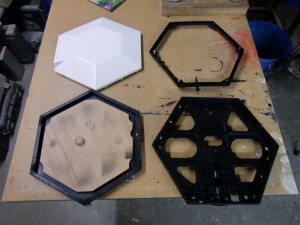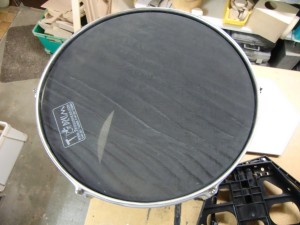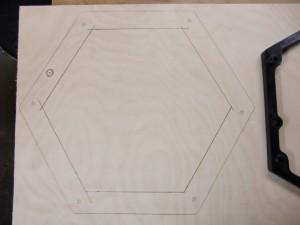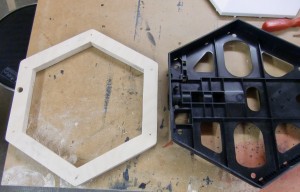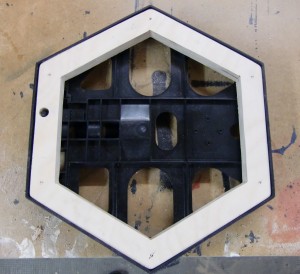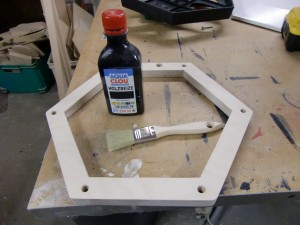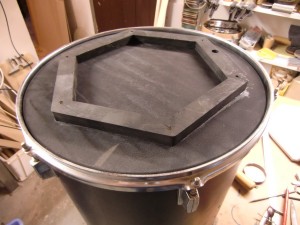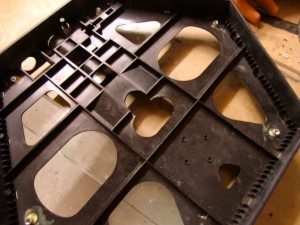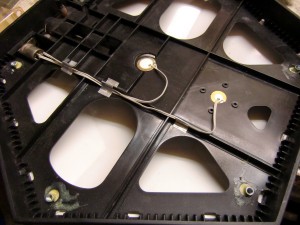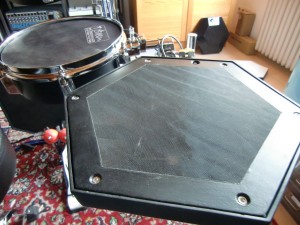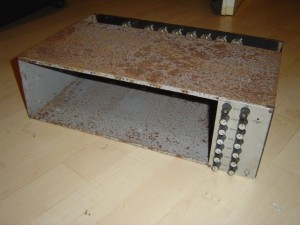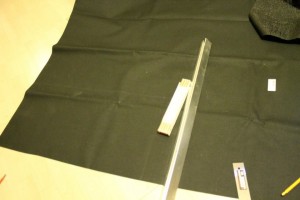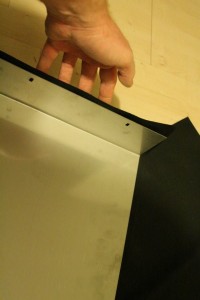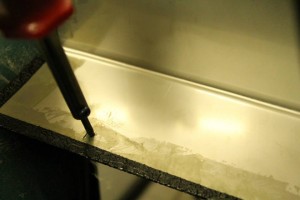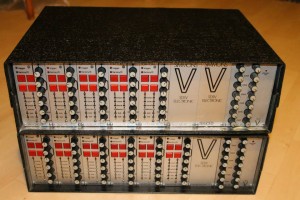Thanks to Michael (Buchner) for this documentation:
Nobody made sexier pads but Simmons. What would David Simmons do in these times? I don’t know. A plasma pad? With warp drive? One could expect that. But I for myself decided to convert an ordinary SDS 9/1000 pad into a proper mesh head pad. And I kept the construction as simple as possible.
First I disassembled the original pad as shown in pic.1. A mesh head fitting in size was a 16″, as to be seen in pic 2. It was mounted on an old acoustic tom and tensioned as desired later on the pad (pic 3).
Now I built a plywood frame as shown on pic 4 and 5. It has to slide into the main frame easy like on pic 6. A little black paint and a good german beer ended the day with pic 7 and pic 8.
Now the sensational simple next step: The frame was glued with wood glue directly onto the pre-tensioned mesh head on the stand tom (pic 9) and was allowed to dry for one day. Yes, sad, but true: You don’t have the possibility to adjust the tension of the mesh later, but you don’t have to build constructions with rims and lugs: No risk, no fun. After drying, the head was cut out around the edge and the stand tom was free to work again as usual.
I wanted to have the head piezo exactly in the middle, so I cutted away some mainframe plastic (pic 10) and attached a wooden subframe (pic 11). This is not necessarily important. See the wiring of the 2 piezos on pic 12, don’t forget to wire the rim piezo out of phase for Roland use. You don’t need a big piezo for the rim, the small one as showed on the pic avoids gain reduction in your brain (in your ELECTRONIC DRUM brain, sorry) The foam trigger cone is an airplane earplug (pic 13), because these do the BEST job and they are FREE. Sorry if I ruin some companies business now 🙂
You can see the 6 screws around the frame: This makes it possible to remove the frame with the glued-on head to check the electronics and improve the triggers. They don’t have anything to do with the heads tension. The corresponding nuts are glued under the main frame. You never have to remove the back lid again, this means, that no plastic tongues can break away anymore.
Yes, and, as expected, it works and LOOKS great (pic 14). I am not a heavy hitter and so I don’t expect to have the head changed one time. But this would be possible with warm water and starting over at pic 9!
Pic 1
Pic 2
Pic 3
Pic 4
Pic 5
Pic 6
Pic 7
Pic 8
Pic 9
Pic 10
Pic 11
Pic 12
Pic 13
Pic 14
